
Moderator: Bobby Varanasi, Top 25 "Globalization Powerhouse" Leaders; Top 20 "Future of Work", "Business Strategy", "Digital Disruption" and "Change Management" Global Thought Leaders
Panelist: Howie Chang, Founder & Chief Executive Officer, Forward School
Panelist: Shanmuganathan Palanisamy, Chief Executive Officer, Kontron Asia Pacific Design Sdn Bhd
Moderator: Ts. Shamsul Anuar Abdul Wahid, Director Corporate Technology, Malaysia’s national Applied Research and Development Centre (MIMOS)
Panelists: AP Dr Fawnizu Hussin, Chair IEEE Malaysia Awards & Recognitions Committee and Associate Professor, Electrical & Electronic Engineering, UTP
Panelists: Sakthivel Narayanasamy, Chief Executive Officer, Galactic Advance Engineering (M) Sdn Bhd
With major downsizing efforts because of the pandemic, many players had lost a large talent pool, while the remaining employees can easily get demotivated as a result.
Moderator: AP Dr Fawnizu Hussin, Chair IEEE Malaysia Awards & Recognitions Committee and Associate Professor, Electrical & Electronic Engineering, UTP
Panelists: Balan Krishnan, Head of Human Resources, Dexcom
Panelists: Muhammad Hilman Rao Abdullah, Human Resources Director, Nexperia
Mr. Selva Nagappan
Managing Director, EPCON Asia 2022 & Knowledge Group of Companies
Almost every country had experienced a setback in the economy as a direct result of the Covid-19 pandemic. The pandemic led to many factory closures and staff shortages in Malaysian facilities that test and package semiconductors. However, in Southeast Asia, the electronics industry is seen as one of the main industries to help boost sustainable economic recovery.
Many other industries' recovery, especially the automotive industry, is directly dependent on semiconductor supply chains. Post-pandemic, the industry must quickly evaluate and react to impacts of three fronts: supply chain, market demand, and workforce. This session grinds into identifying new strategies to revitalize, restructure and rebuild towards a sustainable future.
Speaker:
Esugasini Subramaniam, Director of SIG Global Operations and Supply Chain, Micron Technology, Penang, Malaysia

Suha has diverse experience in the semiconductor industry where she started her career as a Test Development Engineer and paved the way to Hardware Design Engineer, then Technical Program Manager and Site Quality Manager. Currently, she is leading worldwide system integration operations, engineering operations, and supply chain for Micron. Suha is a passionate leader that drives transformations, a change agent, and a believer that talent management of the present and future is the key to success for an organization. She has been leading a women network throughout her career and leading the Asia region Micron Women Leadership Network.

Suha has diverse experience in the semiconductor industry where she started her career as a Test Development Engineer and paved the way to Hardware Design Engineer, then Technical Program Manager and Site Quality Manager. Currently, she is leading worldwide system integration operations, engineering operations, and supply chain for Micron. Suha is a passionate leader that drives transformations, a change agent, and a believer that talent management of the present and future is the key to success for an organization. She has been leading a women network throughout her career and leading the Asia region Micron Women Leadership Network.
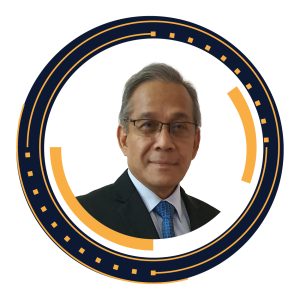
Noorazidi is currently attached to Inari Technology Sdn. Bhd. as Deputy Vice President for OTSP (Operation Technology and Strategic Programs) and EHS (Environment, Health and Safety). Inari Technology is a wholly owned subsidiary of Inari Berhad, the OSAT (Outsourced Semiconductor, Assembly and Test) company in Penang.
Azidi has been in the semiconductor related manufacturing and engineering sector for the past 30 years and now become the company champion on Industry 4.0 adoption since 2017. Beside transforming Inari into digitalization and Cyber Physical System adoption, he is also playing important role in ensuring the company meet and comply to the Environment Health and Safety policies
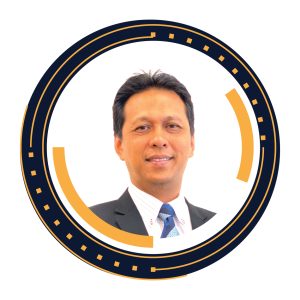
Muhammad Zaki bin Mohd Saman is the Head of Services, Investment (Tourism, Logistics & Digital Economy) at Northern Corridor Implementation Authority (NCIA). He has over 20 year background in Services sector i.e. Tourism, ICT, Telecommunication, Regional Development, Real Estate and Logistics. He holds a Master’s Degree in Management and Bachelor’s Degree in Economics from International Islamic University Malaysia (IIUM). In NCIA, Mr Zaki is working on the tourism, digital economy and logistics sector, mandated to boost socio-economic potential through investment and creation of job in the Northern Corridor Economic Region (NCER) comprising of the four states namely Perak, Penang, Kedah & Perlis.

S. Asmazura Ismail has 26 years of experience in the manufacturing industry under E&E and M&E sectors, specifically in the Semiconductors Value & Supply Chain processes and activities. Graduated from University of Texas (UTA), USA in Industrial Engineering, Ms Asmazura has started as an engineer in the fields of Chemical Etching, Electroplating, Stamping, Forming & Tool Fabrication, and then advanced to senior positions in Engineering, Quality Assurance (QA), New Product (NPI) and Facility Management. Last post held, was a General Manager (GM) in one of the E&E companies in NCER.
In her current role as GM of Investment Cluster – Manufacturing for the Northern Corridor Implementation Authority (NCIA), Ms Asmazura is focused on facilitating the region’s investors to develop matching industry-need talent between the industries and academia, while simultaneously uplifting industry’s ecosystem development, integration, localization, and clustering, resulting in the inflow of investments into the Northern Corridor Economic Region (NCER)
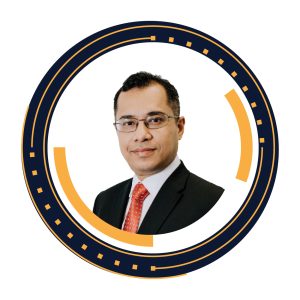
Hasri is the Chief Operating Officer (COO) at The Northern Corridor Implementation authority (NCIA), responsible to lead operations and strategic planning to facilitate the delivery of Northern Corridor Economic Region (NCER) outcomes and accelerate growth. In his current role, Hasri is responsible in operations, corporate advisory & strategic planning matters, which include the development of strategies to facilitate the delivery of NCER outcomes, as well as the review of new opportunities and initiatives that add value to the socioeconomic development in the region. He has over 20 years of experience in various industries; with roles in regional development, strategic planning, continuous improvement, programme and project management, internal control, as well as finance.

Mr. Ernest Sebak is the CEO of integrated electronics manufacturing services (EMS) provider ESCATEC and is based at the Group HQ in Bayan Lepas, Penang. He has built a solid reputation as an outstanding tactical and strategic leader, having served for more than three decades in in the global EMS, OEM, and IT industries.
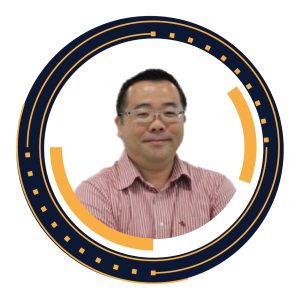
KT Tan graduated from the University of Technology Malaysia (UTM) in 2003 with a bachelor’s degree in electrical and electronics engineering. KT started his career in Solectron Technology as a quality engineer. He ventured into different manufacturing fields such as medical products, solid state drives, surface mount technology, consumer, and computer servers. Throughout his career, KT’s roles span as a quality auditor for ISO 9k, ISO13485, facilitator for FDA audit, and certified trained trainer. Currently, KT is holding the department head position for Product Reliability test and NPI in HP Malaysia Manufacturing Sdn Bhd. He is also the main sponsor and drive for initiating smart manufacturing through industrial 4.0 in HPMM.
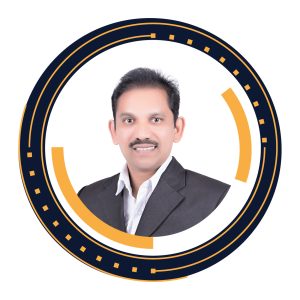
Andy M is the regional HR manager for Dell Technologies in Malaysia, Singapore, Thailand, and Vietnam. He has created and executed best practices programmes for organisational talent planning, diversity and inclusion initiatives, employee resource groups, wellness benefit programmes, career development, and sales performance management. Andy has also earned many Dells Employer of Choice and HR Innovation awards. In addition, he has garnered several Employer of Choice and HR Innovation awards for Dell Malaysia, Singapore, Thailand, and Vietnam.

Danny has over 15 years’ experience in manufacturing IT solutions for SEMI Industry. He is currently responsible for camLine Sdn Bhd operations and business development in camLine group and he actively partners with customers to define their own digital transformation and automation roadmap.

Dato’ Ts. Dr. Shanmuganathan Palanisamy, a transformational leader with high interpersonal skill and passion for innovation. He is the current Kontron’s Malaysia Chief Executive Officer (CEO). Prior to joining Kontron, after a short stint in Malaysia upon graduating from USA, he was based in overseas assignments at Hong Kong, China and Canada where he involved in various R&D Groups developing and manufacturing products for consumer, RF, Medical and embedded industries. He returned to Malaysia to continue contributing to R&D field. With his passion and versatile executive capabilities in engineering with development background, he managed to transform Kontron Malaysia from a manufacturing incline company to today’s R&D CoE (Centre of Excellence) for Kontron embedded boards , system and IoT (Internet of Thing) mainly focusing vertical applications in Industrial 4.0, Avionics and Transportation.
Dato’ Ts. Dr. Shaan begins his career as a RF engineer and continue building his career holding various technical and executive management positions through his 32 years tenure. He holds Bsc. Electrical Engineering (Major in Electronic and System Control), USA, master’s in business administration (MBA), Malaysia and awarded Doctor of Philosopy (PhD) from Universiti Sains Malaysia. He’s also currently appointed as E&E Productivity Nexus Chairperson for Strategic Initiatives 4 and Sub-Committee Council Member of the Penang Socio Economic Recovery Consultative Council (PSERCC). Recently, he has been appointed as Vice Chairman NSC 25/TC 11 (Innovation Management) under Departments of Standards Malaysia.

Dato’ Ts. Dr. Shanmuganathan Palanisamy, a transformational leader with high interpersonal skill and passion for innovation. He is the current Kontron’s Malaysia Chief Executive Officer (CEO). Prior to joining Kontron, after a short stint in Malaysia upon graduating from USA, he was based in overseas assignments at Hong Kong, China and Canada where he involved in various R&D Groups developing and manufacturing products for consumer, RF, Medical and embedded industries. He returned to Malaysia to continue contributing to R&D field. With his passion and versatile executive capabilities in engineering with development background, he managed to transform Kontron Malaysia from a manufacturing incline company to today’s R&D CoE (Centre of Excellence) for Kontron embedded boards , system and IoT (Internet of Thing) mainly focusing vertical applications in Industrial 4.0, Avionics and Transportation.
Dato’ Ts. Dr. Shaan begins his career as a RF engineer and continue building his career holding various technical and executive management positions through his 32 years tenure. He holds Bsc. Electrical Engineering (Major in Electronic and System Control), USA, master’s in business administration (MBA), Malaysia and awarded Doctor of Philosopy (PhD) from Universiti Sains Malaysia. He’s also currently appointed as E&E Productivity Nexus Chairperson for Strategic Initiatives 4 and Sub-Committee Council Member of the Penang Socio Economic Recovery Consultative Council (PSERCC). Recently, he has been appointed as Vice Chairman NSC 25/TC 11 (Innovation Management) under Departments of Standards Malaysia.

Prof. Amlan has almost 20 years of experience in Engineering Education and Research. His key contributions in research lie in the domains of Machine learning, Computer Vision, Cyberphysical Systems, Reconfigurable Computing, and Quantum Computing. He has received multiple project grants in the areas of Security in Cyber-physical Systems, IoT, Embedded System Design, VLSI Design, Quantum Computing, Computer Vision and Data Science from various national and international agencies and corporates. Besides, he also was the Principal Investigator of the Centre of Excellence in Systems Biology and Biomedical Engineering, the University of Calcutta funded by MHRD under TEQIP-III funding during 2013-2017. Prof Amlan also a Sr. Member of IEEE and ACM, IEEE Computer Society Distinguished Visitor (2020-2022), Distinguished Speaker of ACM (2017-2020) and Vice President of Society for Data Science. His editorial role comprises of Series Editorship of Springer Transactions on Computer Systems and Networks, Assoc. Editorship of Elsevier Journal of Computers and Electrical Engineering and G. Editorship of Springer Journal of Applied Sciences.

Shuras V holds a Bachelor’s Degree in Electrical Engineering graduated from University of Technology Malaysia and MBA from NTU Australia. He has master’s degree from Northern Territory University, Australia. He joined Sony Electronic (A- U Cell Manufacturing Organization),Prai Malaysia in 1991 as a Production Engineer and was responsible in establishing production standard for assembly operation, performing risk assessment for New Product Introduction, train new operators on the required SOP, work with CFT team on resolving production quality issues using QCC tools and Kaizen methodology, work with design centre in Japan for design change matters and perform time study with Industrial Engineer to improve the productivity of the shop floor. He is a UK certified Lead Auditor for ISO9001/TS16949 for 1st, 2nd, and 3rd party audit. He was MR (Management Representative) for more than 5 years–ISO9001/TS16949/AS9100. He has trained and coached many organizations on the correct understanding of the new ISO standard, namely ISO9001:2015, IATF16949:2016, ISO14001:2015 and ISO45001:2018, including the Risk Analysis.

Bob Willis currently operates a training and consultancy business
based in UK and has created one of the largest collections of interactive training material in the industry. With his online training webinars Bob has provided a cost effective solution to training worldwide and regularly runs training for SMTA, NPL, SMART, IPC, EIPC and more recently IMAPS. Although a specialist for companies implementing lead-free manufacture Bob has provided worldwide consultancy in all areas of electronic manufacture over the last 30 years. This is based on working in manufacture with contract assembly, printed board manufacture and environmental test facilities. This has earned him the SOLDERTEC/Tin Technology Global Lead-Free Award for his contribution to the industry. He has also been presented with the SMTA International Leadership Award, SMTA International Best Paper Award and IPC Committee Award for contribution to their standards activity.

Mr. Bhanu Sood is a Chief Engineer, Quality and Reliability Division GSFC Deputy Chief Technology
(Detail), NASA’S Goddard Space Flight Center, USA. He serves as an agency expert and center specialist who manages overall center development efforts pertaining to electronic circuit assembly in Goddard Space Flight Center ground and flight missions. He serves as an agency authority on technical committees and advisory groups and manages the establishment and implementation of new research, technology development and technology demonstration initiatives relating to electronic circuit assemblies. His areas of expertise include electronics supply chain risk/reliability assessment, root-cause failure analysis and strategies for counterfeit parts prevention. He is the chair of three SAE Aerospace Standards Committees. He holds one patent, and two invention disclosures as well as the position of senior member of IEEE and member of SAE and ASM.
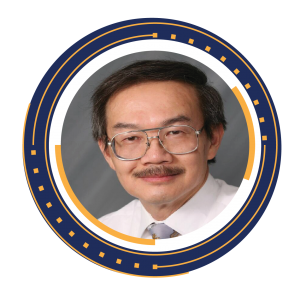
Dr. Ning-Cheng Lee is the Vice President of Technology of Indium Corporation. He has more than 30 years of experience in the development of fluxes and solder pastes for SMT industries and extensive experience in the development of underfills and adhesives. He serves on the board of governors for CPMT and served on the SMTA board of directors. Among other editorial responsibilities, he serves as editorial advisory board of Soldering and Surface Mount Technology, Global SMT & Packaging and as associate editor for IEEE Transactions on Components Packaging Manufacturing Technology.

Dr. Jennie S. Hwang is a pioneer and long-standing leader in SMT packaging and manufacturing, as well as in the lead-free development and deployment. Since its inception, she has been a major contributor to the implementation of Surface Mount manufacturing through hands-on production and as an advisor to OEMs, EMSs and the U.S. government. She has provided solutions to many challenging problems ranging from material performance deficiencies to production yield issues to field failure diagnosis to high reliability issues. Her work covers both commercial and military applications.
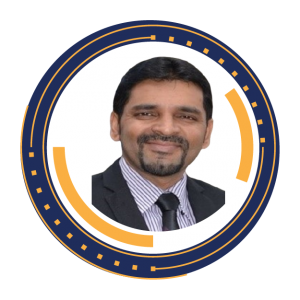
Passionate HR Leader

Balan Krishnan has more than 24 years of HR and Manufacturing under his belt. He has worked in various locations in Asia throughout his career at Intel and Altera, namely in Shanghai, Ho Chi Minh City and Singapore. He is currently the Head of HR at Dexcom a world leader in Continuous Glucose Monitoring device. He oversees a start-up of a brand new manufacturing plant in Penang which will grow from less than 10 employees to more than 3000 in a couple of years. Balan is a strong advocate of Diversity, Equity and Inclusion and was named one of Malaysia’s 50 leaders of Diversity and Inclusion back in 2012. He is a certified John Maxwell coach and facilitator. Balan graduated with an Arts degree from USM. Balan tries to live up to his credo of “Carpe Diem” after being inspired by the movie, The Dead Poet’s Society.
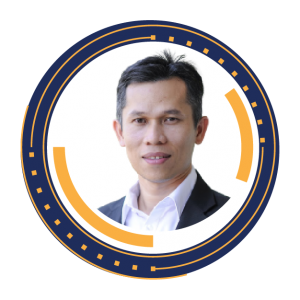
Fawnizu Azmadi Hussin has published more than 130 research papers and holds 6 patents under his name. He graduated from University of Minnesota (USA) in 1999, University of New South Wales (MSc-2001) and Nara Institute of Science and Technology (PhD-2008). Fawnizu was the Chair of IEEE Malaysia Section (2019-2020) and IEEE Circuits & Systems Malaysia Chapter (2013-2014) and was awarded the 2018 Region 10 (Asia Pacific) Outstanding Volunteer Award. He was Deputy Head of E&E department (2013-2014) and Director of Strategic Alliance Office (2014-2018) at Universiti Teknologi Petronas and Visiting Professor at Intel Malaysia (2012-2013) and Malaysia-Japan International Institute of Technology (MJIIT, 2020).
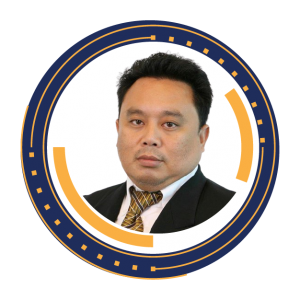
Mr. Shamsul is a technologist with experience in manufacturing and software development with MNCs, local corporations, and government. Among companies that he has worked with, are Hewlett Packard, Altera Corporation, Quantum Peripheral, and Sapura Research. He is currently leading the software development team in MIMOS Berhad in Kulim Hi Tech Park.
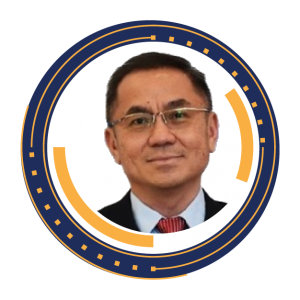
CS Tan graduated from USM in 1991 with a 1st Class Honours degree in Applied Physics and a winner of the Faculty Gold Medal. He also holds an MBA from USM. CS started his career in National Semiconductor Penang and has an illustrious career spanning over 30 years covering industries such as Semiconductor, Hard Disk Storage, and Electronics Manufacturing Services. In the past 15 years, CS has been the General Manager of large MNC factories, such as Flextronics, ON Semiconductor, and ST Microelectronics where he is currently based in. Throughout his career, CS Tan has led various important manufacturing initiatives such as Lean Manufacturing, Total Quality Management, Reliability Centred Maintenance, and more recently Industry 4.0 (Connected Manufacturing). CS Tan has spoken in various industry seminars and workshops in diverse fields such as Supply Chain Management, Factory Security, and Smart Manufacturing. He was also recently appointed as Adjunct Professor to the Faculty of Electrical and Electronics Engineering in UTEM, Melaka.
Howie Chang is the co-founder and CEO of Forward School, an accredited revolutionary technology and future skills school in Malaysia. He leads the growth and development of the company, with the goal of providing the best digital-age education in Southeast Asia. Having spent the formative years of his career in Singapore, he has a long experience in product management, user experience, and digital business transformation in various industries. Howie also had stints with startups of all kinds, where he delved into the dynamic intersection of design, business, and technology. He was also the Head of Design at Viki and Director of Product Management at RedMart, both of which resulted in two of the most notable tech acquisitions in Southeast Asia.

Sakthivel Narayanasamy or better known as Sakthi is the Chairman of Quantum Computing Sdn Bhd – a respected regional specialist in Automation Solutions. He has been in the engineering industry for the past 30 years leading local and regional projects in diverse industries. Sakthi has worked in a number of multinational companies such as General Electric and Siemens. He was a Senior Systems Engineer in Siemens Malaysia before he founded his own business ventures. The international exposure and engineering best practices gained in these companies have contributed to his ability to develop and innovate automation solutions that are practical, sustainable, and scalable with a business focus.
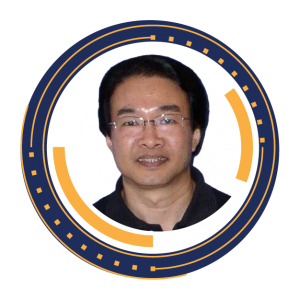
Swee Kiang (SK) Fong has more than 30 years of experience in the semiconductor industry. He started his career and worked in Intel for more than 20 years in various technical and management positions in US and Malaysia. He was instrumental in starting up Intel Design Center in Malaysia and growing the organization to 1500 people responsible for microprocessor, Chipset, SOC design, and development. He then joined Altera Corporation as VP of R&D, leading the development of advanced FPGA, IP, and Quartus software in Malaysia. He was the senior director of Broadcom Corporation overseeing the global operation of a USD1B division before starting up SkyeChip. SK holds a First Class BSEE degree from the University of Technology, Malaysia; and earned his EMBA degree (Beta Gamma Sigma) from Olin School of Business WUSTL, Missouri, and Shanghai Fudan University, China.
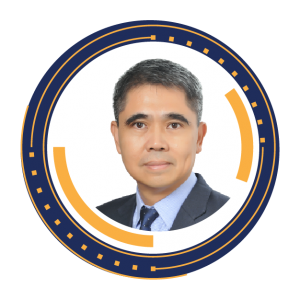
Bor Chun is Keysight Vice President and General Manager of Global Services for Greater China and the Asia Pacific. He has amassed a wide range of experience in the international arena. His expertise includes global marketing, strategic planning, business development, and the acquisition of new businesses. Since 2015, he become the leader of the Services organization and lead the team to continuously grow the business at double digits YoY. He is also an invaluable consultant for various areas other than marketing, with years of significant influence upon decisions in finance, administration, and customer support.
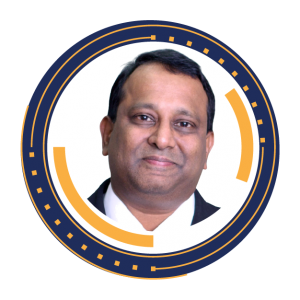
Kalai Selvan Subramaniam has more than 30 years of experience in the electronics/semiconductor industry with leadership positions in Technology Start-Ups to Tier-1 Semiconductor MNCs. He is passionate about setting up organizations from the ground up. He has been instrumental in setting up local capabilities to provide value add E&E engineering services, especially in the area of Semiconductor IC Design and Product Development to Tier-1 Electronics and Semiconductor companies. He is the Co-Founder CEO of Infinecs Systems Sdn. Bhd. Prior to that, he was the General Manager of USains Infotech Sdn. Bhd.

Mr. Shuras Vasu has more than 24 years of operation excellence applying various analytical tools for decision making and continuous improvements. He carries with him strong expertise of Lean Six Sigma, Shop Floor Management, TPM, TQM, CQE and QMS. He has also implemented many TPM initiatives for his organisation especially on the OEE improvements under the Japan Institute of Plant Management. He had the great opportunity to implement the World Class Manufacturing System called New Shop Floor Management. He is well versed with the 5 core tools applications for Automotive Manufacturers.

Dr. Tom Dory has extensive experience in microelectronics covering semiconductor fab processing and assembly, hybrid circuits, and package assembly & test. He left Intel Corporation where he handled Assembly and Test Technology Development Research Division after 20 years. He specialized in packaging and assembly, focusing on high density substrate manufacturing, and chip assembly including flip chip and stacked die and 3D packaging. He was awarded ten patents while at Intel in the areas of embedded package capacitors, underfill applications, and package design. He currently is the R&D manager for formulated products at Fujifilm Electronic Materials, USA.
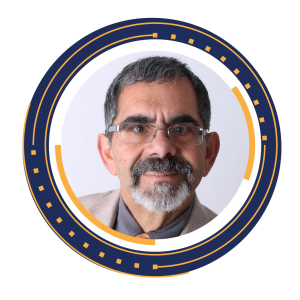
Mr. Phil Zarrow has been involved with PCB fabrication and assembly for more than 35 years. His expertise includes the manufacture of equipment for circuit board fabrication and assembly of through-hole and surface mount technologies. In addition to his background in automated assembly and cleaning, he is recognized for his expertise in surface mount reflow soldering technology and in the design and implementation of SMT placement equipment and reflow soldering systems. He has extensive hands-on experience with set-up and troubleshooting through-hole and SMT processes throughout the world.
